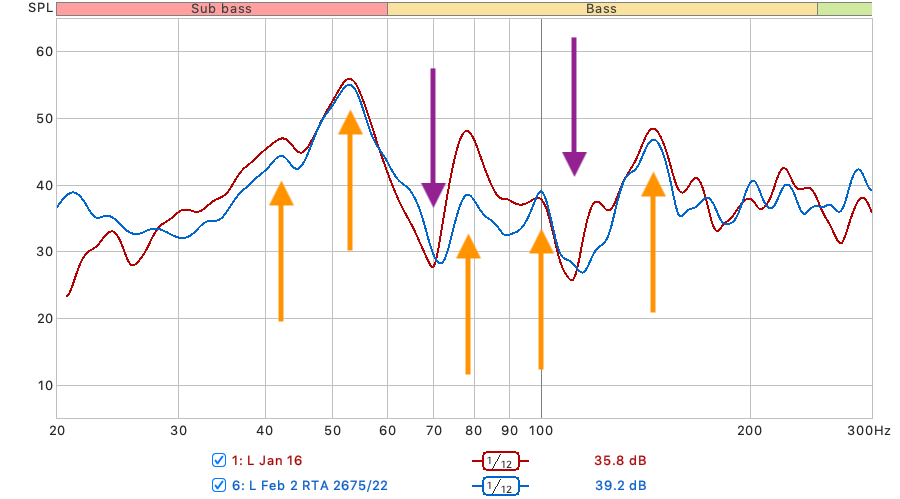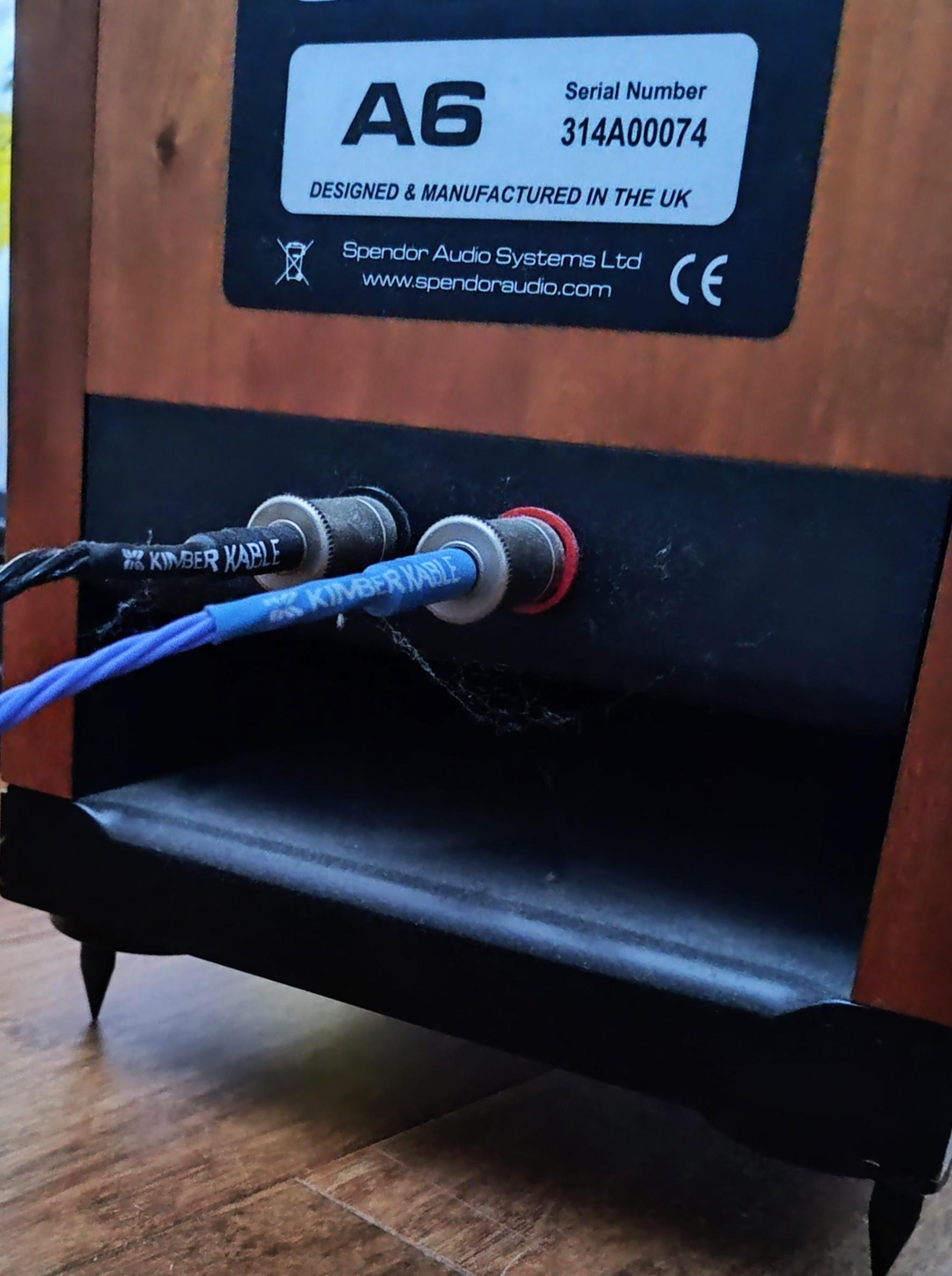Ah, so the 53Hz peak is the 2nd harmonic of your 26.5Hz axial length mode? According to standing wave theory, that mode should reduce in amplitude, not increase, as you pull your speakers further away from the wall, and reach its null point (minimum amplitude) at 1/4 the length of the room (i.e. 1.7m from the wall). However, your measurement shows it increasing, albeit marginally.
I'm confused by your 42Hz peak as none of your room dimensions correspond to a 42Hz mode. Is that the port tuning frequency of your loudspeakers? Your axial width mode is 46Hz but if you sit dead on centred between the side walls this should cancel itself out.



